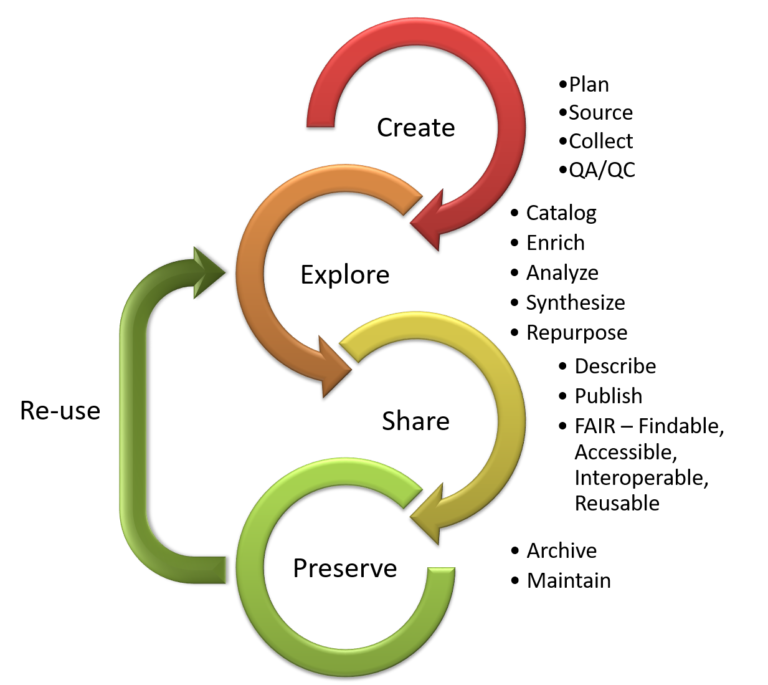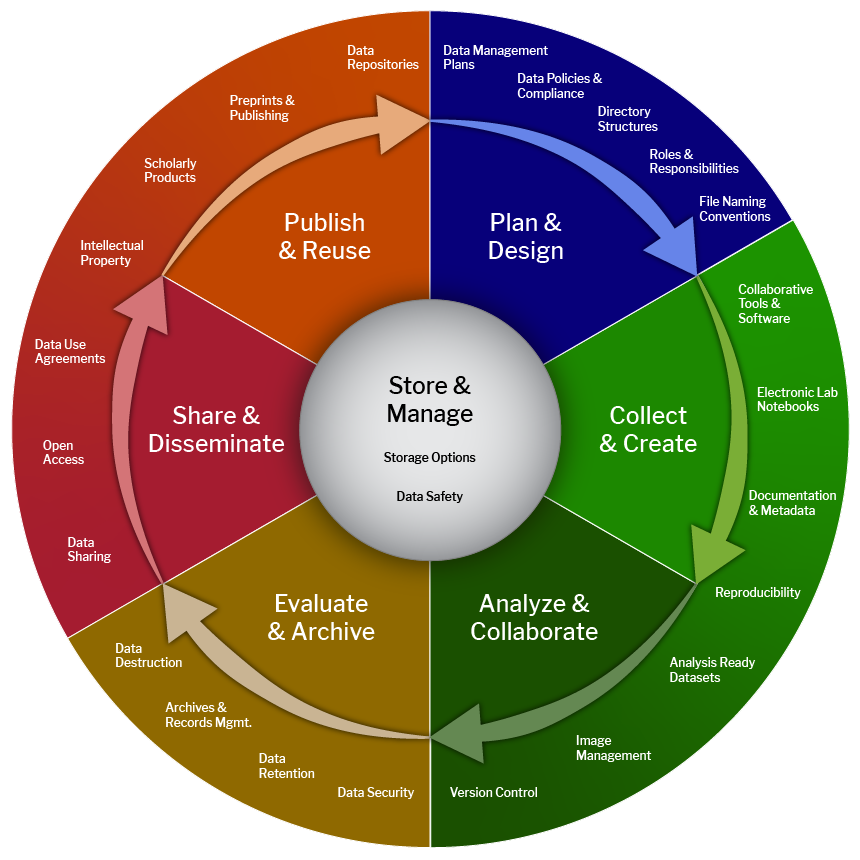Research Data Management and Sharing
Research Data Lifecycle

The image shows a series of four interconnected, color-coded circular arrows, representing the research data lifecycle. Each circular arrow has a distinct color: red at the top, followed by orange, yellow, and green at the bottom. These circles represent different phases of the research process. The circular arrows are arranged vertically in a descending order. Each circle connects to the next with arrows that maintain a flow, symbolizing progression through various phases. The entire arrangement forms a visually appealing representation of a continuous cycle.
The diagram presents all of the stages that research data goes through during a project, from its creation for a study to its distribution and reuse. The phases include Create, Explore, Share, Preserve, and Re-use. This model demonstrates how research data has a longer lifespan than a research project.
Stages and phases
- Create: The data lifecycle begins with a researcher(s) developing a concept for a study; once a study concept is developed, data is collected for that study.
- Explore: In this phase, you clean, analyze and visualize your data to support your research and demonstrate evidence. This is the authorship phase of storytelling.
- Share: After data is collected, it is processed for distribution so that it can be archived and used by other researchers later. Everything you do up to this phase should lead toward data that meets the FAIR Principles to improve the Findability, Accessibility, Interoperability, and Reuse of digital assets.
- Preserve: Once data reaches the distribution stage of the lifecycle, and you have produced documentation, including a clear and accessible data usage license, it is stored in a location (i.e., repository, registry) where other researchers can discover it.
- Re-Use: Data discovery leads to the repurposing of data, which creates a continual loop back to the data processing stage, where the repurposed data is archived and distributed for discovery.
Remember that how you gather, organize, analyze and share data will be based on your research needs and legal and ethical boundaries. The path is not linear, and some actions may not occur.
Why we care
Your research data is a core component of your work and exists within an ever-evolving ecosystem. It's not something you play with and throw away. It’s for others and you in the future. Many researchers return and build upon data from project to project. In this way, having a management and sharing plan with consistent and documented practices will help you and others access the data in the future. Even if you are not a seasoned researcher seeking an NSF or NIH grant getting to know this now will put you a step ahead of others.
Resources
-
FAIR PrinciplesLearn more about FAIR for research data that meets the principles of findability, accessibility, interoperability, and reusability.
-
Harvard Biomedical Research Data Lifecycle
 Harvard's LMA Research Data Management Working Group interactive lifecycle. Select the sections to learn about data management elements at each stage.
Harvard's LMA Research Data Management Working Group interactive lifecycle. Select the sections to learn about data management elements at each stage. -
Introduction to the Data LifecycleThis guide identifies the actions taken at different stages of the data lifecycle, building from the foundations of data management, data curation, and data literacy. From the University of Wisconsin-Madison.